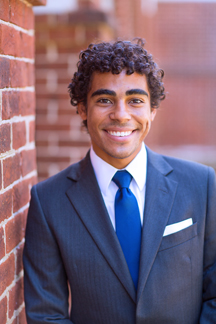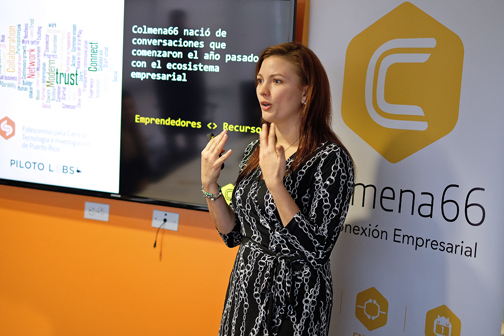Op-Ed: America’s sordid legacy on race and disaster recovery


Connor Maxwell is the research associate for Progress 2050 at the Center for American Progress.
Six months have passed since Hurricane María struck Puerto Rico and the U.S. Virgin Islands. The Category 4 storm destroyed houses and significant infrastructure, leaving mass devastation.
Many Puerto Ricans — who are American citizens — remain without electricity, access to clean drinking water, employment, and even housing. While this storm’s ferocity was nearly unprecedented, the Trump administration’s reaction was predictable.
People of color are frequently the victims of environmental disaster while their government neglects and underserves them time and again. Too often, public officials fail to make the necessary investments in preparedness and resilience solutions, then place savings and corporate profits over the health and well-being of residents of color.
The global climate is changing, and extreme weather disasters will only increase in regularity. Unless the federal government prioritizes equity in preparedness and recovery policy, environmental hazards will continue to bring ruin, displacement, and death to communities of color.
Even in times without extreme weather disasters, the United States has an abysmal record when it comes to protecting people of color from environmental hazards stemming from dangerous industrial activity and harmful infrastructure. These failures undermine trust in government and persist even to this day.
Louisiana’s ‘Cancer Alley’
For instance, in Louisiana, more than 150 industrial plants and refineries have been built along an 85-mile stretch that people of color predominately populate. Known as “Cancer Alley,” this stretch is home to communities with high rates of cancer, illness, and death.
While state officials have downplayed the risks and praised polluters for their commitment to health and safety, U.S. Environmental Protection Agency (EPA) reports have indicated that some chemicals emitted from these plants are carcinogenic. Due to emissions, the five census tracts with the highest estimated cancer risks nationally are in Louisiana.
Meanwhile, in Flint, Michigan, officials diverted city water in an effort to save money but neglected to treat the water to prevent corrosion as it traveled through lead service lines. Their actions exposed more than 100,000 people to dangerous levels of lead.
But, for months, the state ignored the predominantly black residents’ concerns and reassured them the water was safe, even as state employees received “coolers of purified water.” Many residents continue to use bottled water — for drinking, bathing, and even flushing their toilets — almost four years later.
Additionally, just last year, President Donald Trump signed an executive order reviving the Dakota Access oil pipeline, which jeopardizes the water resources of the Standing Rock Sioux Tribe. His blatant indifference to months of protests reemphasizes the administration’s position that Big Oil profits take precedence over the health of native people.
While the failure to adequately respond to problems facing communities of color is ongoing, it’s at its most blatant following natural disasters.
María’s ‘major crisis’
Even before María struck Puerto Rico, emergency personnel and public health officials understood that they faced a major crisis. But when President Trump arrived in San Juan two weeks later, he downplayed the disaster.
So, while the president was throwing paper towels at the survivors of the storm, there was no real effort to fix the approximately $100 billion in damage or help the families of the estimated 1,000 people who lost their lives.
At a time when real policy solutions were needed, the president’s misleading statements and actions undermined recovery and rebuilding efforts by diminishing the urgency of the situation.
Just weeks after the storm, Puerto Rico asked the U.S. Congress for $94 billion to fund recovery and rebuilding efforts. Since then, Congress has appropriated a mere $23 billion in direct aid, and the Trump administration has only spent a fraction of it.
As a result, approximately 1 in 10 Americans in Puerto Rico and the USVI remain without power — and thousands still await permanent access to clean water and housing.
These problems heighten the risk of respiratory illnesses, heart disease, post-traumatic stress disorder (PTSD), and myriad other health issues. Due to the slow response from Washington, D.C., Puerto Rico and the USVI have barely begun the long road to recovery.
Now, as winter turns to spring, the people of Puerto Rico face the hottest and rainiest months of the year, as well as a looming hurricane season that threatens to worsen this nightmare scenario.
Hurricane Harvey dumped 27 trillion gallons of rain on Texas and Louisiana. Houston — which is now home to as many as 40,000 Katrina survivors — was inundated with water. Months after the storm dissipated, Hispanic and black residents were twice as likely as their white counterparts to report experiencing an income shock following the storm and then not getting the help they needed to recover.
White residents were twice as likely as black residents to report that the Federal Emergency Management Agency had already approved their applications for relief.
However, inequitable disaster response transcends the Trump administration. In 2012, Hurricane Sandy tore through New York and New Jersey, killing 159 people and causing $70 billion in property damage. In much of the region, low-income people and people of color were hit the hardest.
Yet, they did not receive equal attention or resources from government officials. In particular, New Jersey’s policies and practices for recovery favored largely white homeowners at the expense of largely black and Hispanic renters. To this day, many buildings that house some of America’s most vulnerable families remain unrepaired and unprepared for extreme weather in the future.
In 2005, under the George W. Bush administration, Hurricane Katrina resulted in nearly 2,000 fatalities and displaced an estimated 1 million residents. African American communities, especially in metropolitan New Orleans, were disproportionately affected by the storm and underserved by the federal government.
Rather than receiving the resources they needed to recover, rebuild, and return to their homes, many were forced out of Louisiana completely. Ten years after Katrina, 90 percent of New Orleans residents had returned to their neighborhoods, yet just 37 percent of residents from the predominantly black Lower Ninth Ward had come home.
Today, there are 92,000 fewer African Americans living in New Orleans compared with before Katrina.
Hurricane María — in addition to the past extreme weather events noted above — provides yet another chilling reminder of the consequences of systemic racism in America. Time and again, communities of color have been left behind. By 2043, these communities will constitute a majority of the U.S population.
Therefore, policymakers must ensure they are fully equipped and prepared to withstand extreme weather fueled by climate change. Instead of employing dog-whistle rhetoric about how Katrina survivors are “a bunch of whiners” or how Puerto Ricans “want everything done for them,” elected officials must promote equity; provide long-term aid to disaster-affected regions; and invest in resilient housing and infrastructure for a changing planet.






Conner Maxwell sounds like he is a racist, bent on proving that people of color are being targeted to die from neglect of people deemed to be with not pink but white skin, who are genocidal in nature! Conner needs to learn that his facts are either wrong,or misleading,or just reflections of his significant anti-white racist attitude.
1. Flint, Michigan installed code approved lead pipes from road connection to homes long ago. Most residents living in them survived although smoking, drinking, and other poor personal habits, some no doubt related to both personal and community circumstances caused a great deal of finger painting as to what should be done and who pays.Blaming political governors misses the mark and should not be used to contend deliberate effort to kill anyone.
2. The same control of LA to Texas jobs so as to eliminate fear by not having threat of weather or atmospheric danger is another example of selectively making a false assumption and poor argument just to maintain the careers of rich men like Sharpton and Jessie, who cried racist when the Univ. of IL football coach selected a different candidate as QB- a charge made even though the one picked also happened to have black skin too!
3. Just because the Lord said the poor shall always be among all of us, is not reason to contend that any group, artificially defined by anyone, has been out to keep all from advancing on personal merit is wrong. Black only parts of Atlanta, GA deny entry to own by their arbitrary preference against their notion of black racial appearance. Its wrong but tolerated. When you percentage increase all incomes, is it a surprise to anyone that the rich get richer faster with the dollar difference? Go the other way and you can say the opposite! Keep in mind that the poor of all colors pay no income tax!
4.You should know that thousands of mainland Americans have come to the rescue of PR Americans and are working here as this is keyed to restore what the government ignored for decades- to upgrade and maintain its power utility. Election money was more important to leaders of both major parties. Government can not run business well. They fail to avoid huge losses and debt. If lucky, we will find ways to help those remote from power survive with alternatives. Few, if any, died in the storm or since from racial caused favoritism.
5. Your pipe line point vs an Indian Reservation is pure bunk! The re-routing eliminated a bogus money seeking campaign by the real racists. Nobody is keeping any so-called Native American on any Reservation. My best associate performer is a Cree from Montana in Michigan! He lives yards away from a protected Reservation of fewer than 100 homes whose owners share a $1 million a year tax free income from a Casino. Why work?Just keep others from building on the other 100 vacant lots to share in the loot.
6. People of PR can hardly tell seasonal differences and none have ever frozen or been cooked by weather! The ocean gets a degree or two warmer in summer but its a great ‘heat-sink’ until hurricane season comes to feed the circulating storms need for energy. Usually it seems God made it a way to turn the storms North into cooler waters taking a lot of moisture and energy to cooler sections and stirring up the atmosphere as intended. You should consider current mini-ice age that happens about every 235 years and lasts for about 30 years. Climate is affected by animal and plant life as God also made plants and animals into a giant Eco-system. Make CO2 and plants thrive. Burn hydrogen for fuel and you get clean drinkable stuff called H2O or water.
Learn to contribute to ways to control the Sun and elliptical path of the Earth around it, if you can decide what climate should be anywhere! Environmental concern is fine to have, control of it is way beyond any local or global government. People in PR may soon live with a smaller government that does not employ 40% of the working age population while another 40% do not file PR tax returns and live in a barter economy for goods and services needed to survive without government hand-outs. One day a new PR will emerge with the same name- Free Associated State- or Estado Libre y Asociado in Spanish, but it will not be forced by Washington lawyers to await orders to follow and it will be a haven for retirees instead of tourists that get off the boat for four hours in Old San Juan to be counted as evidence supporting the government expense to encourage what free enterprise has brought to it.
Your answer will be appreciated even if you risk your job to do it.